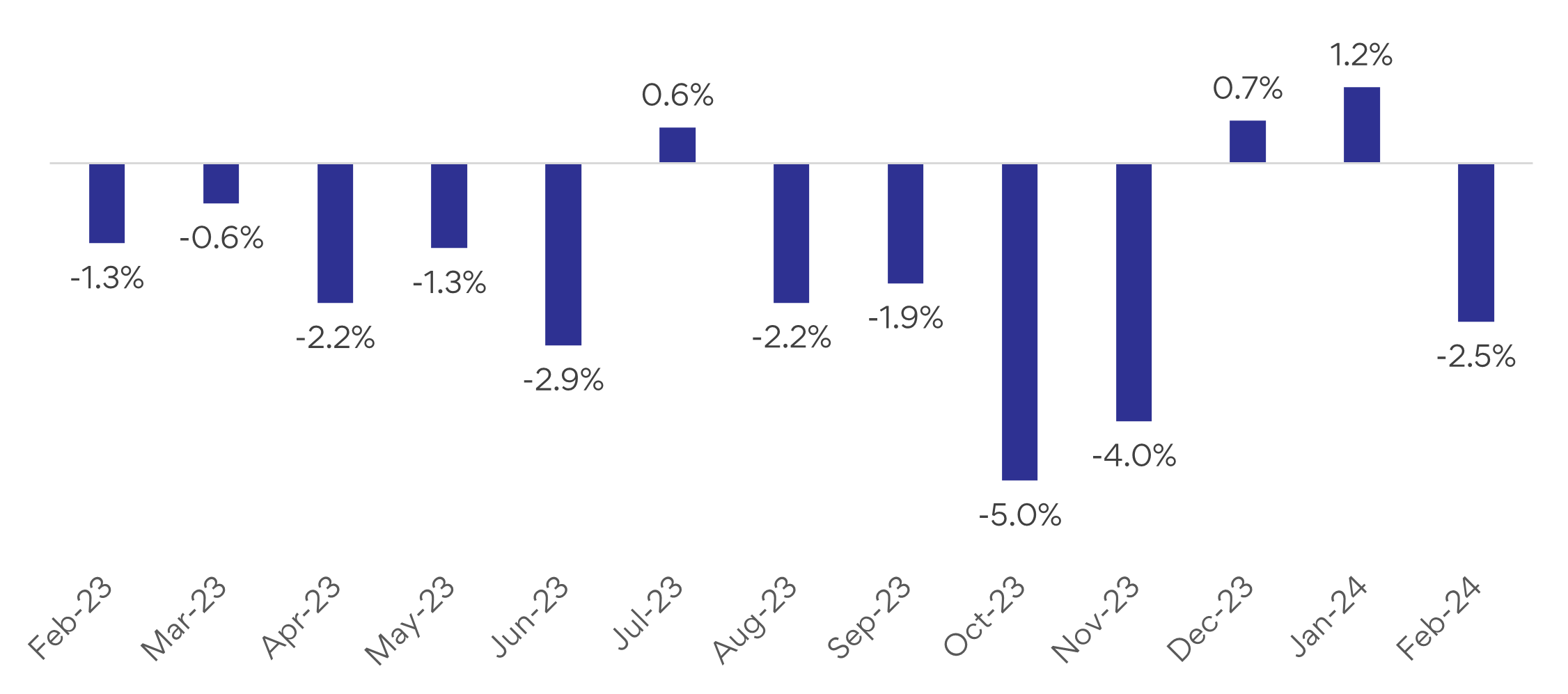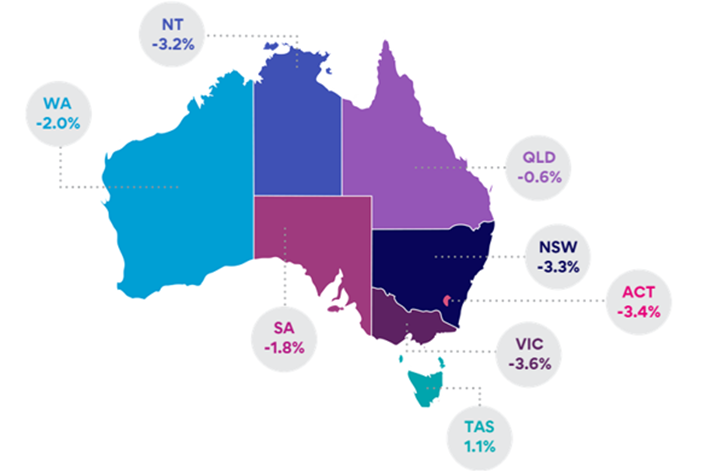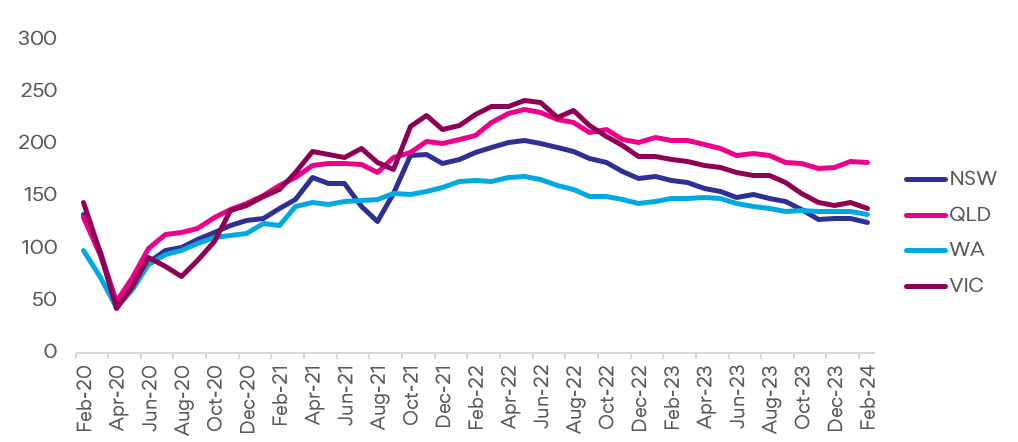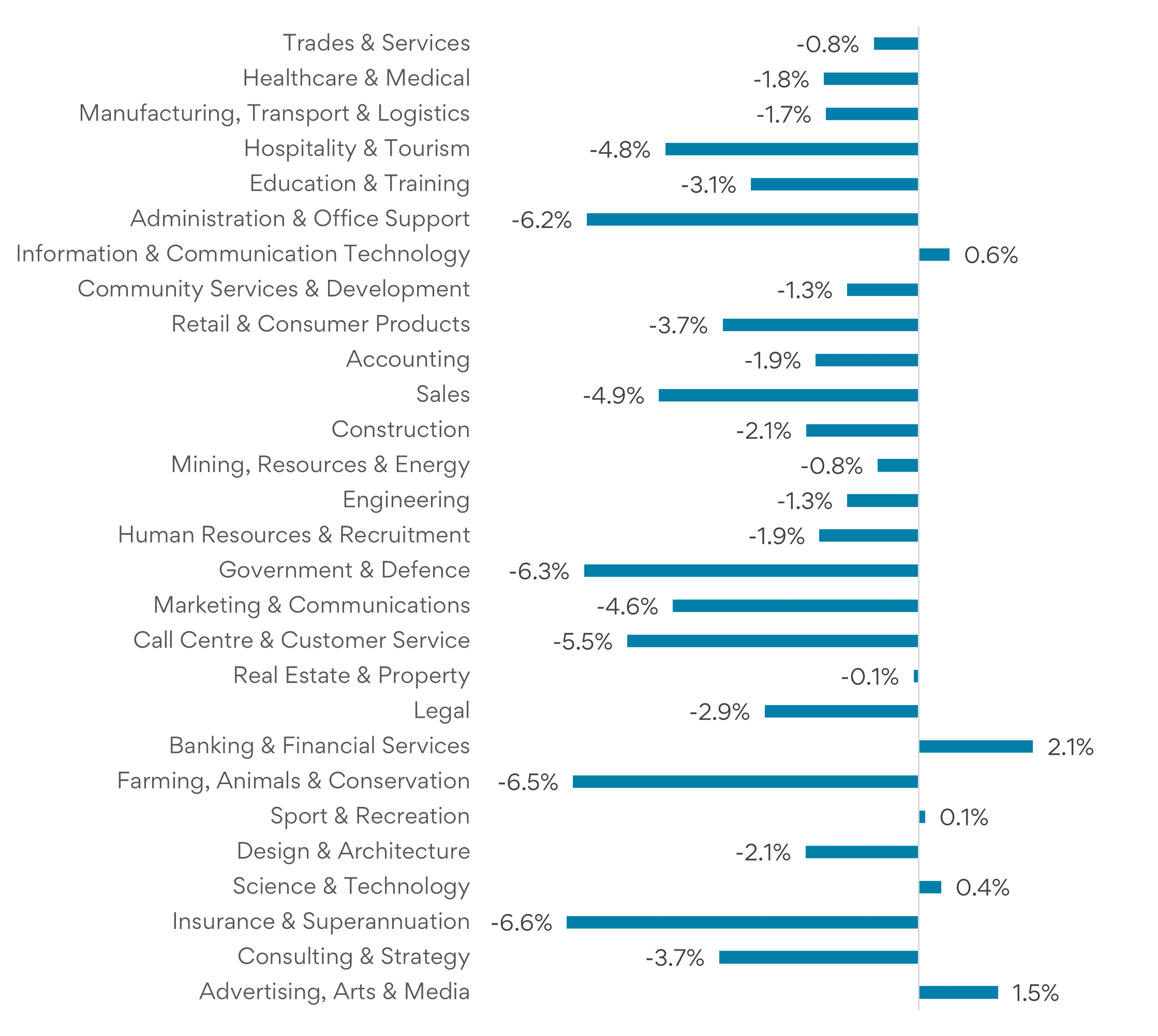SEEK Employment Report - February 2024
- Job ads declined 2.5% in February.
- Job ad volumes are down 18.6% year-on-year (y/y).
- Applications per job ad rose 2.9% from the month prior.*
- Job ads in Tasmania increased 1.1% in February.
- All other states and territories recorded a decline in ad volumes, the largest decline was Victoria (-3.6%).
- Applications per job ad rose in Western Australia, New South Wales, Victoria & Tasmania.
- Information & Communication Technology was one of only five industries where job ads rose month-on-month (m/m).
- Falling job ads in Administration & Office Support (-6.2%) and Hospitality & Tourism (-4.8%) were the biggest contributors to overall decline m/m.
*Applications per job ad are recorded with a one-month lag. Data shown in this report refers to January data.
NATIONAL INSIGHTS



STATE & TERRITORY INSIGHTS


INDUSTRY INSIGHTS

-ENDS-
Banner photo by Mikael Blomkvist.
ABOUT THE SEEK EMPLOYMENT REPORT
The SEEK Employment Report is Australia’s leading employment index and provides a comprehensive overview of the Australian Employment Marketplace. The report includes the SEEK Employment Index (SEI) which measures only new job ads posted within the reported month to provide a clean measure of demand for labour across all classifications.
NOTES
(1) The SEI may differ to the job ad count on SEEK’s website due to a number of factors including: a) seasonal adjustments applied to the SEI; b) the exclusion of duplicated job ads from the SEI; and c) the exclusion of Company Listings (included under Company Profiles) from the SEI
(2) The Covid-19 pandemic led to a high level of volatility in labour market data between April 2020 and March 2022. As a result, caution is recommended when interpreting trend estimates during this period as large month-to-month changes in variables generated multiple trend breaks
(3) The applications per ad index contains a series break at Jan 2016 when the calculation of this series changed from using gross variables (inclusive of all SEEK job listings) to net variables (removing duplicate job listings). This change has a negligible impact on recent data points, but caution is recommended when interpreting data immediately following the series break, and particularly in 2016 where growth rates have not been adjusted for the series break.
Disclaimer: The Data should be viewed and regarded as standalone information and should not be aggregated with any other information whether such information has been previously provided by SEEK Limited, ("SEEK"). The Data is given in summary form and whilst care has been taken in its preparation, SEEK makes no representations whatsoever about its completeness or accuracy. SEEK expressly bears no responsibility or liability for any reliance placed by you on the Data, or from the use of the Data by you. If you have received this message in error, please notify the sender immediately